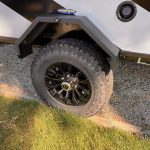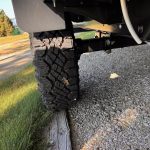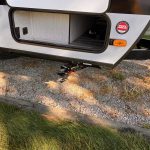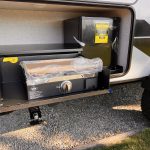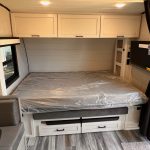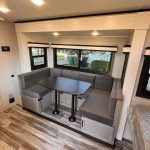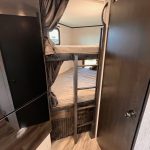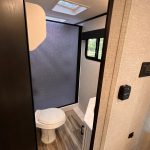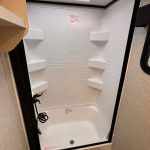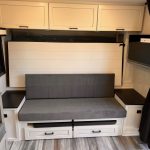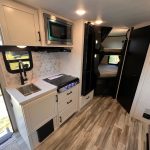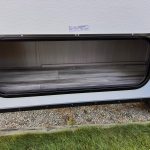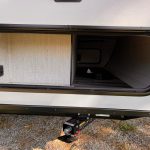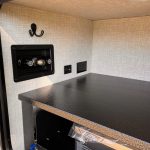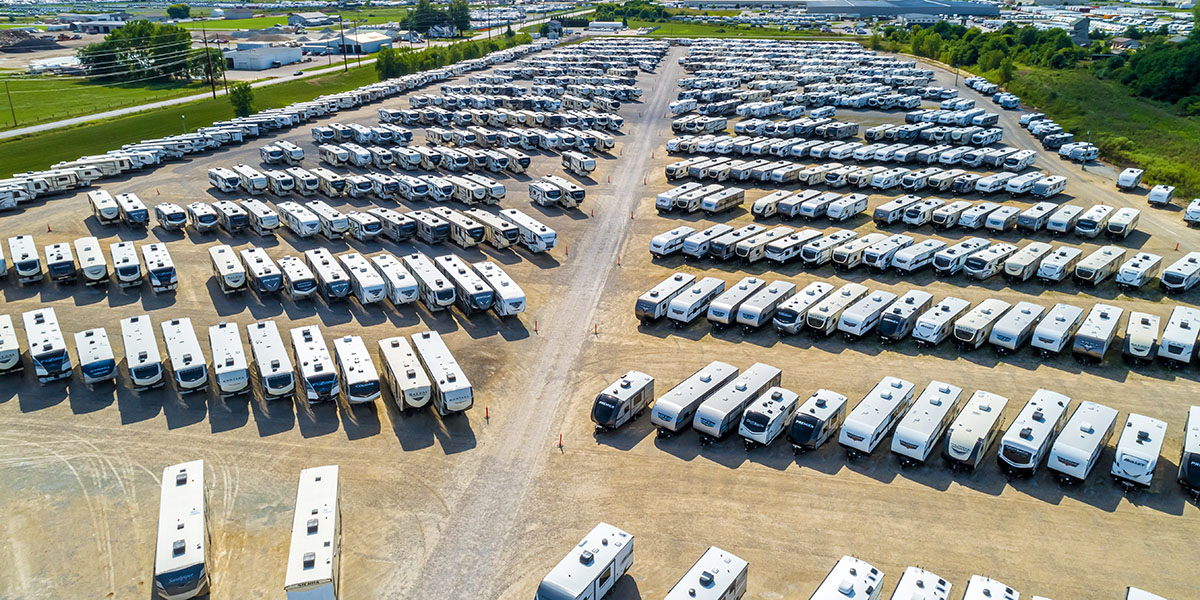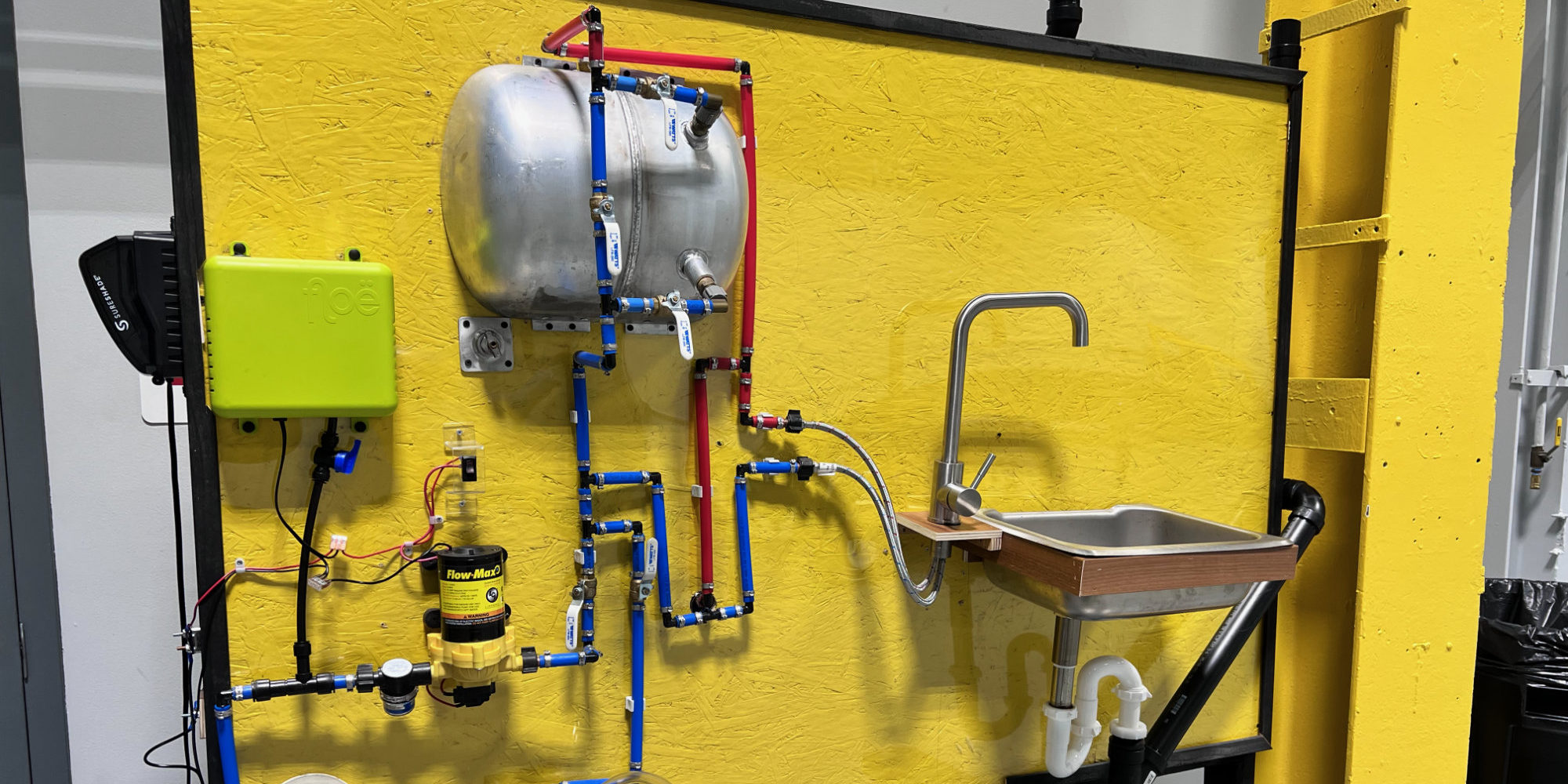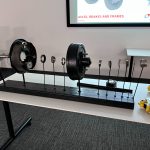When you step into a motorhome, you need to realize something: What you’re seeing is only half the picture. Motorhomes are unique in that they start with a structure — the chassis —that comes from one of the big vehicle manufacturers. From there, these motorhome chassis are delivered to the RV companies who go to work building the actual camping portion of the rig on the backs of these machines.
So, you might be wondering: How do I know if a motorhome chassis is a good one? How do the different chassis compare against one another. It’s a big question. (And a good one, you savvy RV buyer you.) For the most part, what we’re going to look at in this article are chassis that sit under Class C motorhomes. (Mostly, anyway. We’ll say a short word on Class As at the end.)
So, let’s get you started. We’ll start with a few important notes on motorhome chassis themselves. Then we’ll get into some differences in the ones on the RV market.
A Note on Chassis Builds and Years
One thing you’ll want to do as part of your research process is find out if the chassis year and model year are the same. Don’t be surprised if you find that the chassis itself is listed for one model year with the camper being from another. In other words, a motorhome chassis may sit on a manufacturer’s grounds for long enough that the model year changes. This isn’t a problem or a something to flag. Quite simply, it’s something to know. I have seen a quite a few people noticing this, so thought it was worth mentioning.
You should also know that companies that make these chassis sell a lot of them to the trades. They are literally jacks of all trades and no usually RV-specific. You as likely to see a plumber with one of these as an RVer. So, when a chassis manufacturer builds a chassis, the core of their business is to the trades and that’s how these were designed.
Therefore, I would strongly suggest driving a few examples around. Doing so will help you see if you have a strong preference for one over the other. Also, know that some RV companies have recognized this industrial nature and have taken steps to improve handling and ride. For example, the E-Series chassis in one RV may give a very different driving experience depending on any changes the RV builder employs. There is absolutely a difference in how one RV drives versus another even on the same chassis based on the changes these RV companies make.
Looking Back on Class Cs
For many years Chevrolet/GMC, Ford and Dodge built what are called cutaway chassis. Essentially, these could be recognized as the front portion of a van with the back a bare chassis. These would be shipped to RV companies who then built a camper onto the bare chassis portion. The result was a Class C.
Both Chevrolet/GMC and Ford continue to offer a somewhat modernized version of these vintage chassis. Both are stalwart beasts with big V8 engines and plenty of cargo carrying capacity.What that means for you is that, despite the weight of the camper build on the back of the motorhome chassis, there may be plenty of capacity left over to carry your stuff, your liquids, and potentially even a trailer. That’s quite something.
Nowadays, Dodge is Ram. And Ram doesn’t really offer one of these traditional platforms. I no longer see RV companies building rigs on the Chevrolet/GMC platform. So that leaves the Ford E-Series as the last of the traditional heavy-duty cutaway chassis.
Ford E-Series: High on HP and Torque, Low on New Tech
Definitely the senior member of this bunch, the current version of Ford’s E-Series cutaway debuted in 1992. Though it has seen a decent number of upgrades, including to the engine and transmission, this motorhome chassis doesn’t have many of the latest ergonomic nor technological features.
What it does offer is a monster 7.3L gasoline V8 — dubbed the Godzilla engine. This big V8 has the benefit of a tremendous amount of horsepower and torque. (Which is great when overcoming the weight and wind resistance of the motorhome body.) Another advantage of this chassis is towing. If that’s something you want in a Class C, a model based on the E-Series platform might be worth looking into.
On the flip side, if you’re interested in the latest safety technologies this might be one not to focus on. With the age of this platform, a lot of the newer features, like lane assist, predictive braking and other technologies, aren’t even on the options list.
However, it’s a relatively proven and simple beast of a chassis that has remained popular for it’s durability and capability.
Ford Transit: Newer Features, Less Cargo Carrying Capacity
Ford is unusual in that it has two “cutaway” offerings for RV builders. As mentioned, the first is the E-Series; the other is their Transit. Other than the blue oval on the radiator shell, this has almost nothing in common with the E-Series — other than being a cutaway.
This is a thoroughly modern vehicle. That means that it has newer features. Things like lane-drift warnings and preemptive braking (where a vehicle senses something stopped in front of it and applies the brakes). And it includes one of my favorites: wind-drift assist. All of these are available with a Transit.
You can also get modern infotainment systems, far more comfortable seating, and many other features that weren’t even a consideration back when the E-Series was conceived.
Under the hood, Ford’s Transit cutaway uses a 3.5 liter gasoline-fueled twin turbocharged V6 mated to a ten-speed automatic. This driveline does offer good horsepower and torque but uses a lot of technology to accomplish that. The ten-speed automatic, too, is much better suited to finding the right gear and working with the engine. So, that you have a better driving experience.
Comparing the Transit to the E-Series
This means that, especially with RVs built on the Transit chassis, you’ll want to look at how much cargo carrying capacity remains as the Transit isn’t quite as capable in this area as the E-Series.
But the E-Series, being just an old workhorse, has greater cargo carrying and towing capacities. Something else that can be fitted to the Transit chassis from the factory is all-wheel-drive. For those who might like to go where the road can be more challenging, this could be the solution. For example, skiers who want to head into the winter weather or even some off-road conditions.
But if you want something that’s even more capable, a Super C might be the place to look. Ford has an answer there, too.
Mercedes-Benz Sprinter: Feature Options and Optimized Fuel Economy
The Transit is a direct competitor to the Sprinter in many ways. They share a somewhat similar styling and comparable safety technologies available. Like the Transit, Mercedes-Benz offers a slew of safety technologies. Even so, the RV company that orders the chassis has to specify what they want built in. So, careful shopping is the order of the day if this has value to you.
Also, know that it’s typically the RV company that orders these in fleet orders. That means that the number of features on the chassis can be dictated by what the RV company prioritizes. I’ve seen some with a full complement of safety and driving technologies and some that are much less well equipped.
The Big Difference Between the Transit and the Sprinter
Possibly the biggest difference between the Mercedes-Benz Sprinter and the Ford Transit lies under the hood, where currently Mercedes-Benz offerings feature a 2.0 liter twin turbocharged four-cylinder diesel. The incredible technology of this engine means you still get decent performance despite the very small displacement of the engine.
Being a diesel, it also means that you’ll get decent fuel economy, relatively speaking.
But that engine can also be a liability as the number of places that are willing to perform even routine maintenance on it is somewhat limited. I’ve been told that even some routine maintenance items can be rather pricey.
On the plus side, Mercedes-Benz has made a more capable 4500-series chassis available which I’ve seen under the forthcoming Grand Design Lineage. This more capable variant means more capacity for cargo and towing.
Like the Transit, the Sprinter is also available with all-wheel-drive and Mercedes-Benz has a lot of experience in this field going back to the early days of the Unimog military vehicle.
Super C Chassis: Employing the Power of the Pickup
As long as we’re peering beneath the veneer, it’s worth noting that Ford, Chevrolet, and Ram offer what looks like the front of a pickup truck along with a bare chassis back. This is something you may find under a Super C type motorhome.
These are typically available with the various company’s diesel engines and true four-wheel-drive meaning that they offer some off-road capability. They may also be well-suited to those who like to camp in more challenging weather, such as skiers who need all-wheel-drive
People are almost as passionate about the brand of their pickup trucks as they are about their religion.
Do know that all these of these chassis can be had in very capable iterations which is part of the appeal of the Super C motorhome. That means that, properly equipped, some of these Super C rigs can tow a substantial trailer.
At the Forefront of Four Wheel Drive and Truck Innovation
For example, we got to see a Jayco Seneca XT 35L recently which was based on the Ford F600 chassis. This meant a big Ford 7.3 liter diesel engine and ten-speed automatic.
One of the benefits of these being based essentially on pickup platforms is that pickups are the most profitable area for vehicle manufacturers and the companies expend a tremendous amount of effort keeping these at the forefront of ergonomics and design.
If a manufacturer innovates a feature, it doesn’t take long for the others to follow suit.
Something else available on these chassis is true four-wheel-drive. While the Transit and Sprinter cutaway chassis offer all-wheel-drive, it is possible to get true four-wheel-drive on these chassis including low range. I’m not sure you’ll be tackling the Rubicon trail in a motorhome but the more capable off-road driving functionality can get you out of some sticky situations.
Freightliner: Even Bigger Is Out There
If these pickup-based models aren’t enough, Freightliner offers chassis for use in motorhomes. While it might be assumed that these are big truck companies that make industrial machines better left for moving vans, and that’s certainly one of the customers who buys them, it may surprise you to find how nice these can be to drive.
Like with the “cutaway” chassis, these can be ordered in trim levels. These range from simple to sensational. They can include things like air seats and many of the safety technologies you might expect in a passenger vehicle. Since these Freightliner rigs initially started out for delivery trucks and school buses, they have remarkably good turning function. After all, commercial vehicles need to be able to get out of tight spots.
They also offer incredible cargo carrying capability. So, if towing is something that’s a high priority, a Super C based on the Freightliner chassis might be just the answer.
Class A Motorhomes: New Legislation Putting a Damper on Diesel
There may be some challenges to the future of the Class A motorhomes based on how pending legislation is going to go. Six states, led by California’s Air Resources Board’s example, are currently slated to outlaw diesel-powered motorhomes and other heavy commercial diesel vehicles.
There is a lot of information about this and it remains to be seen how deeply this will cut once the dust settles, but we left big Class A motorhome chassis out of this article until we see how that market goes.
Conclusions on Motorhome Chassis Comparison
As with any RV purchase, knowing what you want before you start seriously shopping can really help you with the final outcome. Do you want to be able to tow a larger load? Are you planning to go where four-wheel-drive is useful? Do you spend a lot of time in very rural places where service might be more difficult to obtain? Hopefully this article has been a good starting point in your shopping adventure.

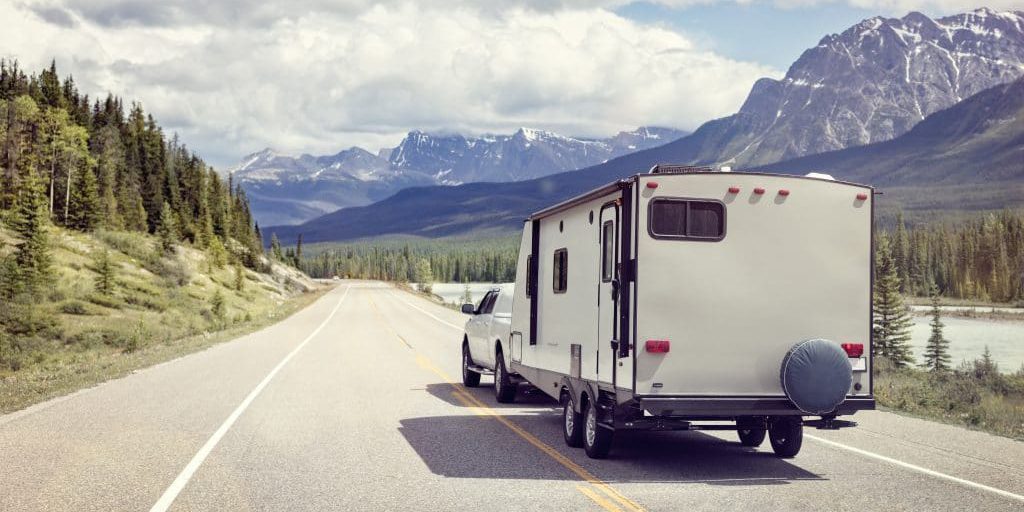
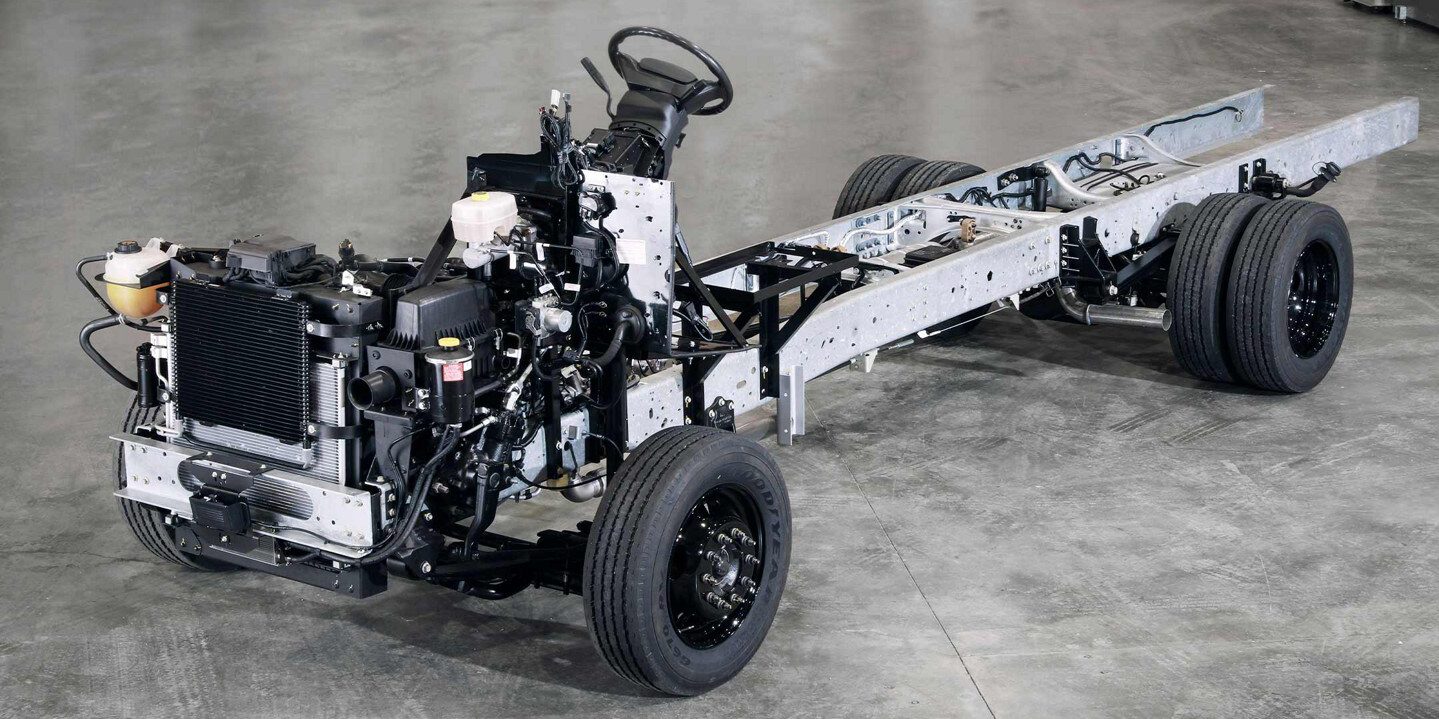

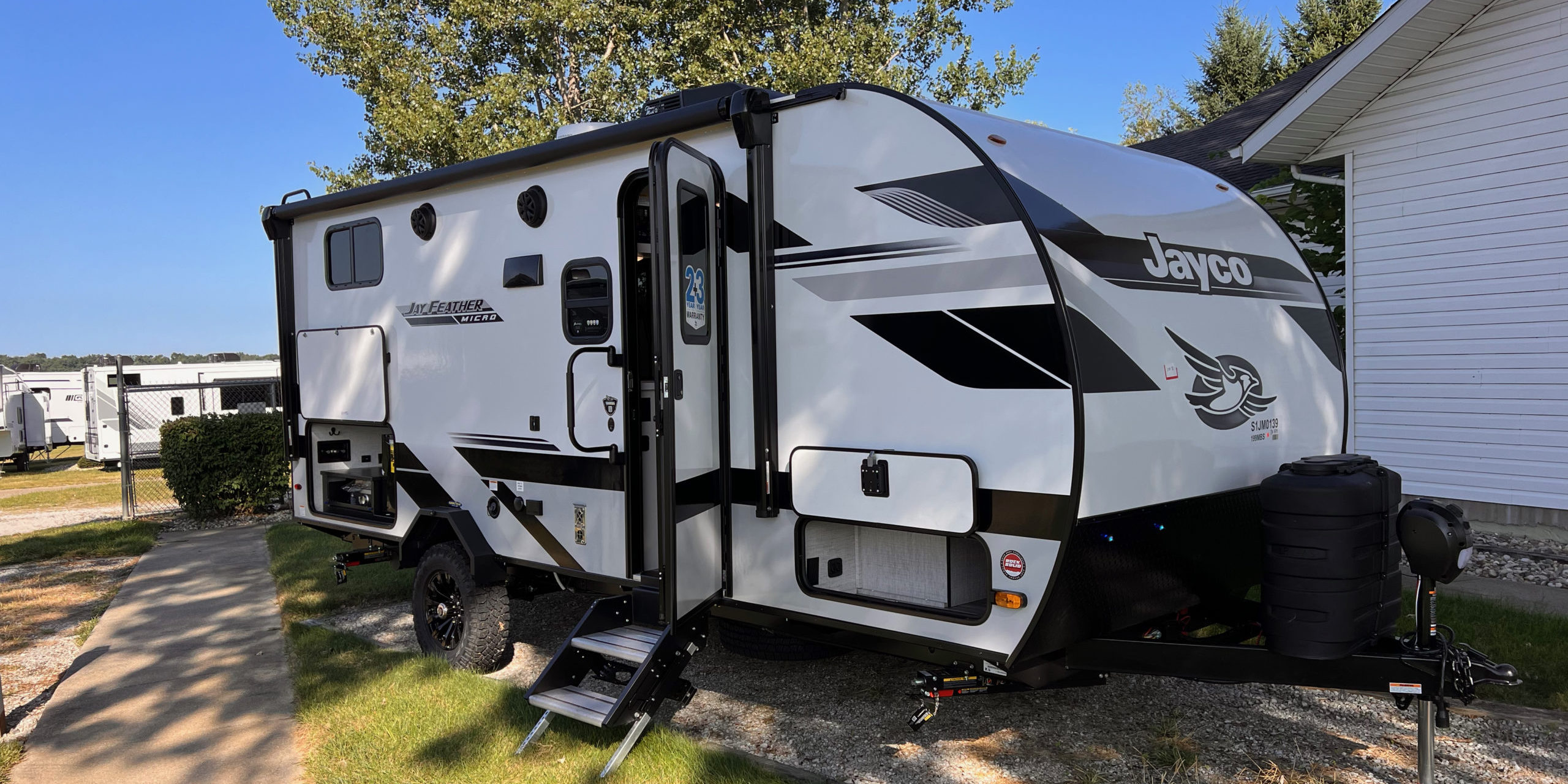
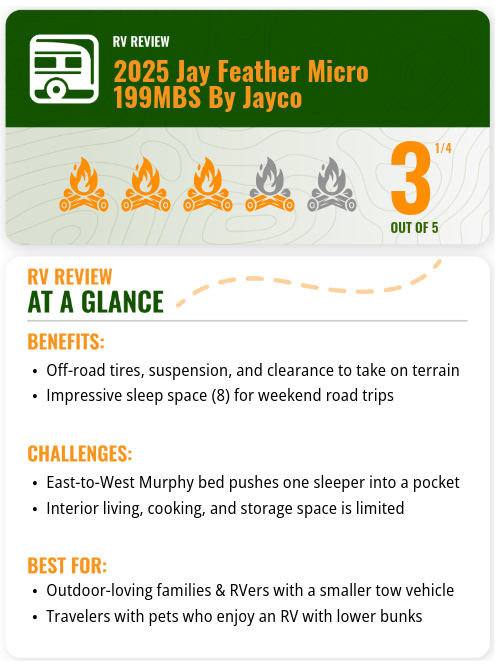 I rate the 2025 Jayco Jay Feather Micro 199MBS three and quarter out of five. One of the real surprises is that this little camper packs a lot of sleeping spots. Even so, some people really don’t like Murphy beds — and especially don’t like examples that head east to west. (Someone has to sleep in the corner.)
I rate the 2025 Jayco Jay Feather Micro 199MBS three and quarter out of five. One of the real surprises is that this little camper packs a lot of sleeping spots. Even so, some people really don’t like Murphy beds — and especially don’t like examples that head east to west. (Someone has to sleep in the corner.) 
